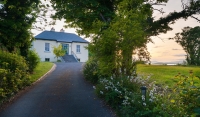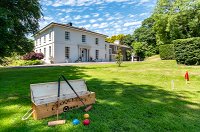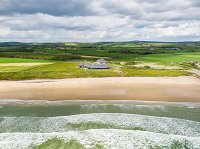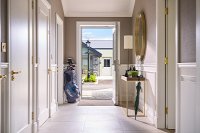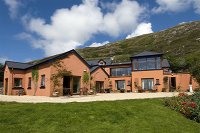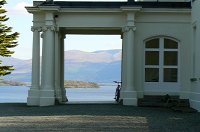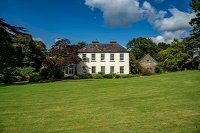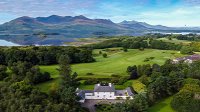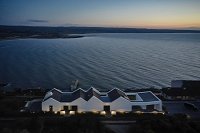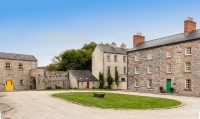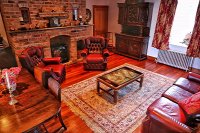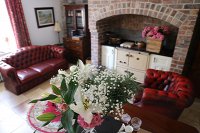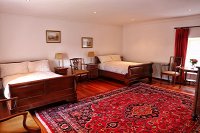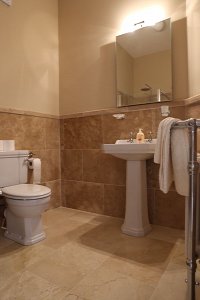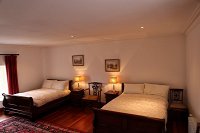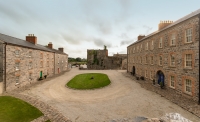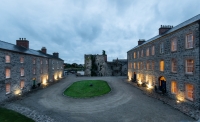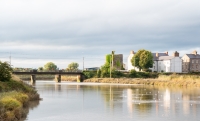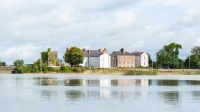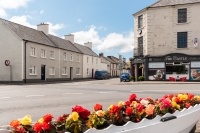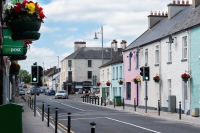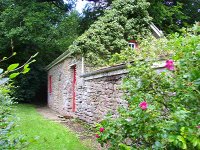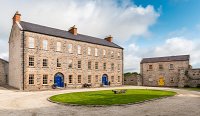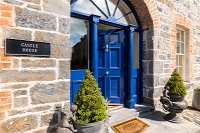De Clare House is a lovingly restored home with a rich history dating right back to 1778. Originally a soldier’s barracks, this property has been brought back to life brick by brick by its dedicated owners, resulting in a large, luxury vacation home available now for rentals.
Set in a private and secluded gated Courtyard, De Clare House has four stories. The living areas are all located on the ground floor and the bedrooms are spread over the top three floors.
The kitchen and dining area is to your left as you enter through he front door. This is a lovely warm, cosy and bright room with a wood burning stove. The kitchen is very well equipped and has some of the original features of the house on display. It has all the appliances you will need along with crockery, glassware, cutlery and cooking equipment. It is a kitchen that was made to be used.
The sitting room is to your right as you come in the front door. It is really comfortable and inviting with a wood burning stove along with a supply of timber for your stay. This room has a TV and relaxing couches and armchairs – the perfect place to unwind after a day exploring the County of Clare.
There are four bedrooms in De Clare House and each of them is ensuite. There are three king bedrooms and the 4th bedroom has a four poster bed!
Larger groups could also rent the adjoining Thomond House or Castle House (each sleeping 10) or indeed the grogeous cosy Coach House (sleeps just 2 people).
The Courtyard is shared among the houses and offers plenty of parking right outside your door. At night time the houses are lit up spectacularly. To the rear of Thomond House and Castle House is the beautifully landscaped walled garden area which is shared between all the properties. Filled with flowers and seating here and there, this would be a wonderful place to escape with a good book or newspaper.
LOCATION
Located in the Clare village of Clarecastle and alongside the River Fergus and the ruins of a Castle, De Clare House is just a 15 minute drive from Shannon Airport, a half an hour from Limerick or an hour from Galway. The popular Clare villages of Lahinch, Doonbeg and Bunratty with its Folk Park and Castle are less than a half an hour away as are the famous Cliffs of Moher. Ennis is just a 2 mile drive away and the fine five star Dromoland Castle Hotel is just a 10 minute drive.
Clarecastle is a small Village but it has a Church, supermarket, two pubs and a great Café serving the best of home made treats. There is also a playground for children within an easy stroll of De Clare House.
HISTORY
De Clare House, Clarecastle, Co Clare
This walled site on the banks of the River Fergus just outside Clarecastle has a long and intriguing history. This history can be read in the buildings that survive today. A site of strategic importance, it was strengthened by the Anglo-Normans, who built a walled enclosure protected by a castle in the thirteenth century. The ruined castle still dominates, while the wall, although only surviving in places, still defines this little
settlement.
In the middle ages the castle came under the control of the indigenous King of Thomond, but by the late sixteenth century the British had reasserted their power. In the seventeenth century the British garrisoned the castle, building a barracks, which was drawn by the English traveller and antiquarian, Thomas Dineley, in 1681. This barracks was dominated by two buildings which projected from the castle into the enclosure. Although they have disappeared, these buildings have left their mark in the redundant limestone chimneypiece and blocked doorways that can be seen in the east wall of the castle.
The buildings that fill the enclosure today were constructed over a long period of time in the eighteenth century. Like most eighteenth-century barracks built in Ireland, the buildings were constructed around a parade ground. The oldest block, built in two phases, is probably the ‘soldiers’ quarters’, the long three-storey building, close to the road, facing the former parade ground in the centre of the site. Directly opposite are the ‘officers’ quarters’, an impressive, three-storey block that was completed by 1766. Around the perimeter are the ancillary buildings: the hospital behind the soldiers’ quarters; the staff house facing east; the straw store located in the seventeenth-century guard house and the stables behind the officers’ quarters. An entrance, protected by gun loops, was built into the medieval wall on the west side and can still be seen today.
The barracks, effectively closed in the 1890s, were used to house Belgian refugees in the First World War. With Independence in 1922 it came into the possession of the Free State. The buildings were sold in the 1950s. For years they were left to deteriorate, but now they have been restored and are once again in use.
© Judith Hill, 2018
